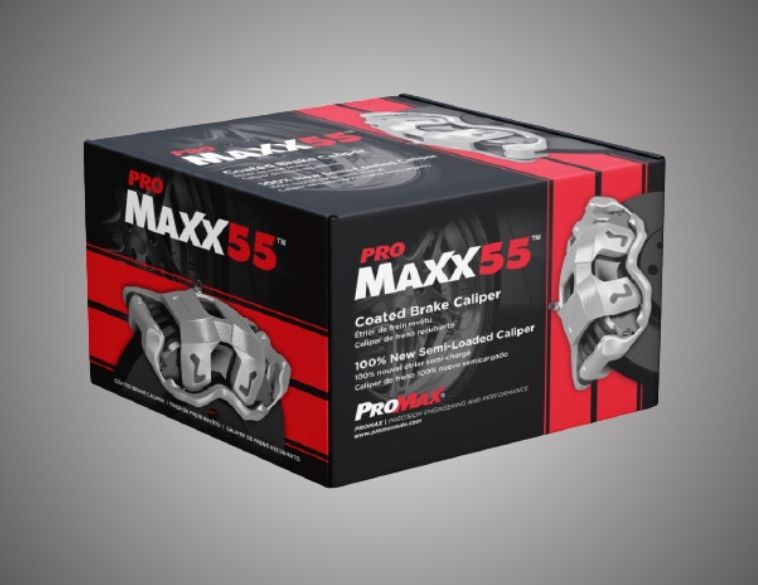On April 24, the Automotive Industries Association (AIA) of Canada held its National Conference in the Toronto area.
A total of 210 people attended the conferences. Of these, 60% came from Ontario, around 15% from Quebec and the remainder from other provinces and the United States. Representatives from all sectors of the automotive aftermarket met first for the networking evening the previous evening.
The following day, a series of conferences and presentations addressed the issues of the day.
“We’re continuing our work to lead the industry forward,” explains Jean-François Champagne, President of AIA Canada, in an interview with Autosphere. “Our sector is constantly evolving, and we need to be dynamic. This event allows us to keep up with the times. We have a good representation of the aftermarket sectors, whether we’re talking about auto mechanics, bodywork or tires. We come together by working on our common ground to address important issues, while putting our differences aside.”
Shannon Spano, outgoing President of the AIA Canada’s Board of Directors, opened the meeting by emphasizing how it creates opportunities and connections between people in the industry.
Jean-François Champagne, took over with an update on the organization and the industry. “We’re linked to an industry where there’s always something new. We’re also seeing a number of organizations consolidating to face the future. At these conferences, we’ll be looking at the importance of data, the role of women in the industry and finally the challenge of the workforce, while also addressing the health of the market. We also need to talk about technology, as repair processes become more complex and modern cars are harder to diagnose and repair, making access to data even more important. Access to data requires us to continue our fight, for diagnosis and repair, because the consumer must have the right to choose. We’re making progress, but the battle isn’t won.”
According to Champagne, the intelligence of modern vehicles will create opportunities for independent workshops and tire centres that have the necessary tools, knowledge and access.
He points out that the biggest challenge remains manpower, an issue addressed in detail at the conferences.
Alana Baker, VP Research and Government Relations, explained the progress of the demand for access to repair processes and vehicle maintenance data. She said that the association has scored important points in Quebec, and that Bill C244 is under consideration at the federal level. But it’s not over, it’s just the beginning,” she warns. “The manufacturers are more clearly opposed to what we’re doing. We need to rally behind our message and build on our successes.” With the financial support of its members, AIA Canada also intends to continue its awareness campaigns aimed at the general public.
Attracting talent
A panel then took over to talk about the employment situation in the industry and approaches to attracting more workers. Moderated by James Channer of Motion Brands, the panel included Alan McClelland, CSR, Rector of the School of Transportation, Centennial College, Sylvain Seguin, President of Fix Auto Canada, Shannon Spano, Vice-President of Sales at Wakefield Canada, Kevin Weaver, President of Georgian College, and Dr. Mauricio Zelaya of EY Canada.
Job market trends were presented. While the sector is successful in attracting workers, it is difficult to retain them. Some 65% don’t stay, and for 46% of them, they leave for better pay or career advancement opportunities, or because of the perception of the industry.
They move into dealerships, parts distribution and sales, and transportation, as well as the construction sector, among others. And the younger ones are moving twice as fast as the veterans. Many sectors are very aggressive and offer very good conditions.
Statistics show that 2.4% of technicians in Canada are women.
Food for thought
The panelists agreed that managers need to show up where young people are thinking about their future, and show them that our industry is dynamic. They recommend thinking about retention even before hiring, to reduce the exodus to other sectors. In short, making yourself attractive, talk to parents, if possible, and educate them about the openings in the sector and the opportunities for successful careers.
One of the panelists pointed out that we need to open our doors to interns and young seasonal workers, as on average one in seven or eight will be interested in staying and developing within the company. Working conditions are not the only factor in retention; young workers want opportunities to progress.
For her part, Shannon Spano says we need to show that this industry can be diverse, and that women can add value. “Help them make their mark.”
The reality is that the trades need to be sold, as there is a reported significant drop in the number of graduates in the automotive trades, and we need to make sure they stay in the programs, as a majority don’t complete the training.
Retention involves a number of avenues, including a healthy work climate, a training program and enhanced supervision, opportunities for career advancement and attractive salary conditions. A company needs to know its numbers to strike the right balance between profitability and compensation. It’s not always easy in small shops to recognize that the more qualified technicians are, the more they should earn. Another approach to retention is to offer the opportunity to become a shareholder.
Fleet evolution
Todd Campau, Aftermarket Specialist, S&P Global Mobilty, USA, and research partner with AIA Canada, provided an overview of the Canadian vehicle fleet.
The number of vehicles on the road and the number of kilometres driven have a clear impact on aftermarket businesses. Canada’s economy is normalizing after the pandemic, but the drop in consumer spending combined with rising inflation is good news for the aftermarket, he says, as people prefer to wait before changing cars. Sales of new cars and light trucks, including crossovers, are picking up in Canada, but not yet at pre-pandemic levels. The total should be 1.94 million units sold in 2025 and 2.02 million in 2027.
There are 26.7 million cars on the road in Canada, a figure that has remained stable since 2020, as the trend towards light trucks continues. Around 6% of vehicles are taken off the road each year. The average age of vehicles in operation is 10.5 years. The number of kilometres driven by Canadian motorists will reach 373 billion in 2023, an increase of 16,700,000 KM. The specialist notes that people are getting back on the road as they were before the pandemic.
EVs are doing more kilometres on average than gasoline – or diesel – powered vehicles, but these results are still fragmentary. A certain reduction in the fleet is attributable to the resale of used vehicles to the United States, partly because of the advantageous exchange rate. “The danger is that newer vehicles, less than nine years old, go to the U.S. and are taken out of our market.”
Sales of electric and hybrid vehicles are on the rise, but account for less than 10% of the market. And these deliveries are 80% concentrated on light trucks. Campau also notes that the wave of early EV adopters is waning. He adds that 1% of the fleet on the road is made up of vehicles of this type, which represents a marginal share for the aftermarket.
“In general, new technologies, like ADAS, are interesting for our market, in order to maintain and repair them, because they affect the whole fleet. The decision by some car rental agencies in the USA to reduce the number of electric vehicles in their fleets would be linked to the fact that consumers are not familiar with their use and also, that the cost of maintaining them is higher than expected, which would represent good news for the aftermarket.”
Managing change in the industry
Daryl Benton, Vice President, Aftermarket Sales & Marketing at MANN+HUMMEL, then turned to the issue of change in the industry. ” Change is the only constant,” he says. The issues are vast: technology growth, climate change, supply fragility, political polarization and armed conflict. And in our industry: EVs, connectivity and telematics, e-commerce, ADAS systems or even 3D printing of parts right in the workshop. We can’t just stand still and try to survive. Get ready for change, because when opportunities arise, it may be too late.”
He then presented some examples of companies that have been able to evolve in the face of change, such as IBM and LEGO, despite difficult transition periods.
Asked by Autosphere about the challenges that the arrival of electric vehicles on the market represents for his company, which specializes in engine oil filtration, Benton pointed out that EVs create new opportunities. “First of all, electric vehicle interiors are more spacious, which will increase demand for cabin filters. Environmental concerns are also driving our research projects to capture brake dust and tire wear.”
An informal discussion then took place between Paul McCarthy, President of MEMA Aftermarket Suppliers, Sabrina Thring, Brand President in Driven Brands’ collision group, and Chris Kinghorn, Vice President Strategy and Growth for UAP. Discussions focused on key trends in the automotive service sector.
The contribution of artificial intelligence
To conclude the conferences, Doug Stephens, founder and president of Retail Prophet, explained the impact of the artificial intelligence (AI) revolution on the automotive maintenance service offering.
According to this expert, companies that stand out for the quality of their relationships with their customers will now be challenged by those who will use AI to forge closer ties with consumers. The same is true for distribution companies, which have access to this tool to better forecast inventories and optimize supply chains.
The futurist thus presented how AI will transform customer relations and revise the value of the supply chain, while warning of the risks associated with this technology. He stressed, however, that the successful development of a strategy for using AI in automotive companies rests on the surprising value of human creativity.
Appreciated recognition
During the event, the Automotive Industries Association of Canada was keen to highlight the contribution of two members whose careers and involvement set them apart. Patrick Verriet of Mann + Hummel was named AIA Young Leader of the Year.
His personal and professional career at the same company where his father worked, is a perfect illustration of what the automotive aftermarket has to offer young talent. Verriet thanked AIA for this recognition, and spoke of the importance of the people in the industry who have enabled him to succeed so brilliantly.
The AIA Distinguished Service Award was presented to Bill Hay, who has spent his entire career in the automotive industry. Originally in the tire business, he then migrated to replacement parts and their distribution. “Working in this industry is an honour and a privilege,” he told attendees. “I receive this tribute in the presence of many of my friends in the industry.”







 MONTRÉAL
MONTRÉAL Full time
Full time


